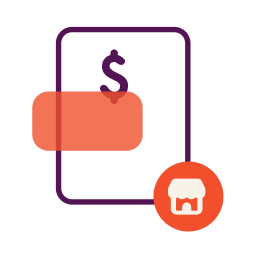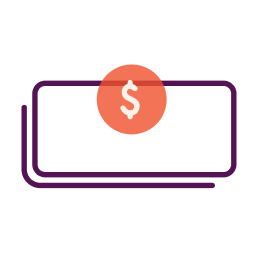When it comes to financing business growth, entrepreneurs have a growing number of options to consider, and determining which lender is right for you can be a bit of a headache. Two lending options that consistently make the top of the “best business loans” list are bank loans and SBA loans. They are generally the lowest cost options available, and offer the most flexible repayment terms, but are also the hardest to qualify for.
SBA Loans vs. Bank Loans: What’s the Difference?
An SBA preferred bank can offer both SBA loans and traditional bank loans, or commercial loans. An SBA loan is guaranteed by the Small Business Administration, a traditional bank loan is not. This means that a bank may suggest an SBA loan for a higher-risk client. SBA loans have more flexible limits, interest rates, and payments than traditional bank loans. The SBA does not provide small business lending, rather they guarantee business loans provided through SBA preferred financial institutions such as banks, microlenders and online commercial lenders. These SBA loans are government guaranteed, meaning an SBA preferred lender can offer them to small businesses at low interest rates because the government has promised to pay back 85% of the loan in the event of default. Some banks that are SBA preferred lenders will also have small business loans of their own where they originate “conventional” bank loans for low-risk businesses. These SBA-approved banks will look at the credit profile of a business, as well as the business attributes, and assess the risk profile of the business. If the business is higher risk, the bank may prefer to offer an SBA loan to the business because it is already guaranteed by the federal government. Related Reading: 11 Options If Your Small Business Can’t Pay Its Bills Due to Coronavirus Here’s a high-level overview of conventional business loans and SBA loans.
SBA Loans vs. Conventional Loans: Interest Rates, Terms, Amounts
| Loan Amounts | Interest Rates | Repayment Terms | Turnaround Time | Credit Criteria | |
|---|---|---|---|---|---|
| SBA Loan | $50,000 – $5 million | 6% – 13% | 5 – 25 years | 30 days – 6 months | Requires minimum FICO SBSS score of 140 (usually 160) out of 300 |
| Traditional Bank Loans | Over $250,000 | 5% – 10% | 1 – 20 years | 2 – 4 months | Usually requires excellent business and personal credit scores |
The SBA actually has more than 12 different loan programs (learn about all of them here). The three main SBA loans are:
- SBA 7(a) program, which is the SBA’s most popular loan program.
- SBA 504 program, which is generally for land, commercial real estate, and equipment purchases.
- Microloans, offered up to $50,000 and available through nonprofit community lenders to new and established businesses.
Depending on who you bank with, your bank may have a number of different options available to you as a small business borrower. Wells Fargo, for example, has a multitude of financing options for their small business customers, including loans, lines of credit, equipment financing, commercial real estate loans, medical financing, and more.
Conventional Business Loans
Requirements
Wherever you go for a business loan, requirements will be stingy. As of 2019, a record-high 27.3% of business loan applicants were approved, a good trend but still a sign of the challenge it can be for small business owners looking to borrow money. Here’s what you’ll need to make sure you’re prepared to stand out. Excellent Credit Score Your ambition gets you to the bank door, and good credit opens it up for you. Bad credit can put an early stop to your application, so being on top of your personal credit score and business credit score is crucial. You can check on both for free with Nav, or use Business Loan Builder to get keep tabs on your business credit and get your business credit profile ready to apply. Making your payments on time is a no-brainer for maintaining and building good business credit, but it’s not the only factor. Your credit utilization ratio, a measure of how much of your credit limits you’re using, is also crucial to putting your best foot forward. Cash Flow A bank won’t let you borrow money if you’re not in a position to pay it back. Apart from solid credit, strong cash flow is another way to show the bank or credit union that you’re worth taking a look at. Be sure to have several years’ worth of taxes and financial statements on hand, the lender will likely ask for it during the application or underwriting process. Capital You may have heard the notion that banks only lend to people who don’t actually need the money. This is somewhat true. Banks traditionally favor applicants with so much money in the bank that they don’t need a boost in revenue to make monthly payments. Even if their investment doesn’t go as planned, these applicants could still pay off the entire loan themselves without going bankrupt. Heavy capitalization would likely play a major role if your business is highly seasonal, or prone to the aforementioned fluctuations in revenue. As long as you have the money to make monthly payments, banks might not mind the occasional rough patch. Collateral Collateral isn’t the mandatory requirement it used to be. Numerous banks now offer unsecured long-term loans and other long-term financing at competitive rates. But like capital, the ability to provide collateral may offset issues fulfilling other requirements. Equipment, real estate and inventory are examples of assets that can be used as collateral. If you default on the loan, the bank can seize and sell this asset in order to make their money back. In other words, the collateral acts as added security and eases the bank’s concern of losing money. Let’s say you fulfill the bank’s requirements for annual revenue and time in business but your credit score or cash flow is less than perfect. Both flaws would make the bank hesitant to approve your application. That hesitancy, however, might fade significantly if you put up an expensive asset as collateral.
Terms
Conventional business loan terms can vary widely, depending on your business type, credit standing, and a variety of factors. Because banks are looking to make money themselves, you’ll be more likely to be approved with a high ($250,000+) loan amount, which already means you’ll have to budget a healthy amount for a monthly payment. The length of the loan can vary from 1-20 years, depending on a variety of factors. You can also expect to pay between 5-10% interest, depending on the type of loan you settle on. If you’re curious what your monthly payment might be, you can check out some of Nav’s loan calculators to get your budget right.
How to Apply
Once you’ve settled on a loan type and a lender, and assessed the health and standing of your business, you can go ahead and apply. Be mindful of what documents you’ll need to present, which could include the following:
- Updated business plan with details on your growth and marketing strategies
- Business and personal credit report (the lender will obtain their own copies, as well)
- Business forecast with details on future cash flow and costs
- Tax returns and supporting IRS documents for both your business and personal tax accounts (personal documents for all owners or registered agents of the business)
- Any applicable licenses and registrations for doing business in your state
- All financial documents that would be deemed relevant (including bank statements, credit card sales, unpaid invoices, and accounts receivable due to you)
- Any legal contracts that would be relevant (franchise, incorporation, leasing)
- Documentation of underserved representation (for term loans to which this would be important)
Also be sure to check if your chosen lender offers online applications. This can save you and your business significant time otherwise spent going into the bank to sit down with a representative. The wait time for a traditional bank loan to be approved can vary, but expect to wait up to 2-4 months. This is also important to take into account when assessing why and when you need a loan. A traditional bank loan may not be the answer for more urgent cash needs.
SBA Loans
Requirements
SBA Loans are, in some ways, similar to term loans in terms of requirements, with some differences. To qualify for an SBA loan, you must operate a small, for-profit business that is engaged in business (or plans to) in the U.S. or its possessions. You must have reasonable invested equity in the business and have tapped other resources, including personal assets. You need to be able to show that you need the funds, and that you’ll use them for a sound business purposes. Excellent Credit Score Just like with a traditional bank loan, SBA loans require good credit. Applicants with bad credit may want to consider other options, including those such as business credit cards or microloans, which can help your small business build business credit. SBA lenders will specifically check your FICO SBSS score for loans of $350,000 or less in the 7(a) program. You must have a score of at least 140 (out of a highest possible 300) to pass the the SBA pre-screen, but will want to see a score of at least 160 to be safe. You can check your FICO SBSS score with Nav’s Business Loan Builder plan. If your score isn’t high enough to pass this pre-screen, the underwriting process will become more involved and likely take longer than expected.
Cash Flow Again, like with traditional bank loans, having solid cash flow numbers is crucial when applying for an SBA loan. If your cash flow is tight and the loan won’t help increase revenue for a while, you may need to look to other sources that don’t require you start making those payments right away, such as grants or crowdfunding. You’ll need to show several year’s worth of business taxes and income statements to show strong cash flow numbers. Lapses in cash flow or unexplained dips will be a red flag to lenders, but strong, sustained performance will stand out. Other Requirements The paperwork required for an SBA loan is going to be more involved than some other types of loans or small business financing. But the payoff will hopefully be worth it. Among the paperwork you will need to fill out:
- SBA Loan Application
- Personal Background and Financial Statement
- Business Financial Statements (Profit & Loss, 1-year projected financial statement)
- Ownership & Affiliations
- Business Certificate/License
- Loan Application History
- Income Tax Returns (3 years, personal and business)
- Resumes for each principal of the business
- Business Overview and History, including an explanation of how loan will help the business
- Business Lease (if applicable)
- Purchase Information (if purchasing a business, additional information is required)
Additional information may be required as well. Some lenders may require a business plan, and if you are going to use the proceeds to pay off debt, the lender will need a copy of the promissory note plus the loan payoff amount.
Terms
After the very involved application process and long wait for an approval decision, you could get some good news. That good news will only get better, because SBA loans have some of the best terms available. Where traditional bank loans expect a higher loan amount, SBA loans can approve as low as $50,000, with relatively longer loan terms and low, fixed-rate financing. This leads to lower payments and less of a strain on your budget.
How to Apply
You’ll first want to settle on a lender, and make sure that the lender is SBA approved. Some may offer online applications, which can save your business time. The application and assembling the paperwork may take some time, but be patient and remember the tremendous benefits of SBA loans. Additional Resource: Prepare Your Application for the SBA Paycheck Protection Program
Conventional Loan Advantages
Bank loans and SBA loans can take a long time to fund. If you’re working with a provider of SBA loans with the fastest turnaround times like SmartBiz, you’re still looking at 30 days or more until the money is in your account. For bank loans, the turnaround time can be months. While the wait for a conventional loan can also be long, it can be shorter than that for an SBA loan. Conventional bank loans can also be used for a wide variety of things, whereas SBA loans are more restrictive. If you’re looking for financing with fewer strings attached, a conventional loan may be for you.
SBA Loan Advantages
Banks tend to focus more on customers who are looking for larger loan amounts. From the perspective of the bank, originating a loan for $5,000 costs about the same amount as originating a $10 million loan, but the $10 million loan is going to bring in more revenue. (Remember, banks are in the business of making money too!) SBA loans offer a bit more flexibility when it comes to amount of funding. Many SBA-approved lenders will originate loans up to $5 million, the maximum amount allowed by the SBA. The average loan size for an SBA microloan, however, is only $13,000. Other lenders specialize in offering smaller SBA Advantage loans — SmartBiz is one such lender that offers SBA loans from $30,000 – $350,000. Because the SBA guarantees up to 85% of its loan amounts, the collateral requirements are generally less strict. For SBA loans, personal guarantees are required from any owner of 20% or more of the business. The collateral requirements, however, are sometimes negotiable, and if you are using the SBA loan to purchase assets like equipment or inventory, you may be able to use that as collateral for the loan. The SBA website says that “the SBA will generally not decline a loan when inadequacy of collateral is the only unfavorable factor.” Related Resources:
- Frequently Asked Questions About CARES Act Paycheck Protection Loans for Small Business
- Frequently Asked Questions About Applying for SBA Disaster Loans Due to Coronavirus
When lending out money that they’ve guaranteed on their own, banks always demand the borrower to put up collateral, and the value of the collateral generally needs to be the same as the full amount of the loan. Ronald Blok, former CEO of RaboBank, notes that “the only exception to this rule is for clients who have a long-term relationship with banks and whose business has proven to be profitable over a multi-year period.” Banks also prefer to have collateral that is easily converted into cash, such as cars or real estate, rather than fixed assets. There are exceptions. Wells Fargo business account holders, for example, have access to a loan called FastFlex that allows eligible business owners to access funds as soon as the next day. What you gain in speed of funding, however, you’ll give in cost — loans like FastFlex with faster turnaround times generally have slightly higher APRs. Be sure to ask your bank how long the process of securing financing would be with them and what the turnaround time on different loans they offer looks like.
Final Word: SBA Loans vs. Conventional Loans
SBA loans and conventional business loan are two of the lowest-cost financing options available to business owners. As such, they aren’t the easiest financing options to be approved for, but can certainly be worthwhile for those who qualify. Be sure to know exactly what you’re looking to use the loan for before applying, as this will likely dictate which type of loan you should or shouldn’t (or can or can’t) apply for. Assemble your documents and business information to make the application process as smooth as possible, and be prepared to wait. If you’ve put in the work and been responsible with your business’s finances, have strong cash flow, and great business credit, you could put yourself in a great position to be approved and take that next big step for your business.
Related Articles
- Avoid Small Business Lending Scams and Fraud Related to COVID-19
- What is the Economic Injury Disaster Loan Grant and What Does It Mean for Small Business?
- COVID-19 Resources and Guidance By State
- This Service Provides Free Expert Advice for Your Small Business Debt
- Can I Negotiate Vendor Terms Because of Coronavirus?
This article was originally written on November 15, 2019 and updated on February 3, 2023.



Have at it! We'd love to hear from you and encourage a lively discussion among our users. Please help us keep our site clean and protect yourself. Refrain from posting overtly promotional content, and avoid disclosing personal information such as bank account or phone numbers.
Reviews Disclosure: The responses below are not provided or commissioned by the credit card, financing and service companies that appear on this site. Responses have not been reviewed, approved or otherwise endorsed by the credit card, financing and service companies and it is not their responsibility to ensure all posts and/or questions are answered.